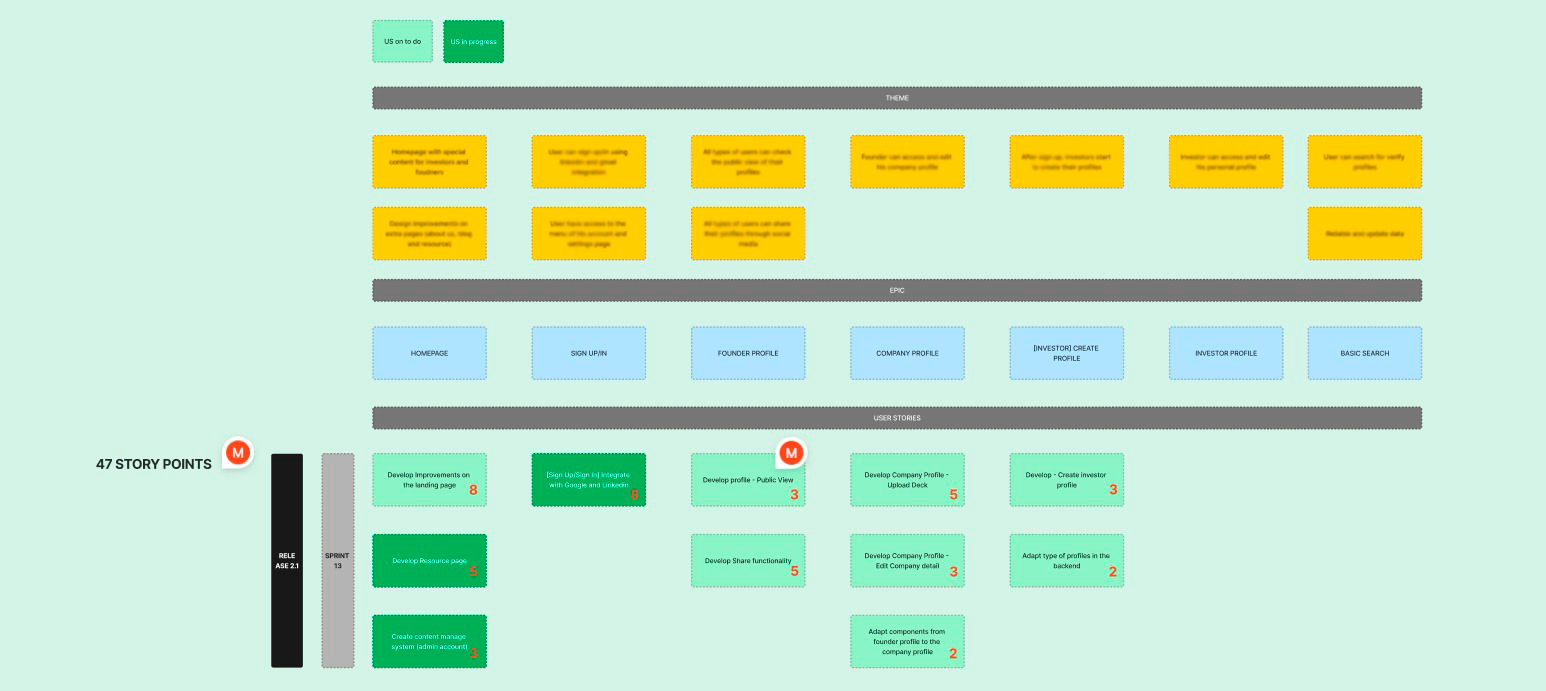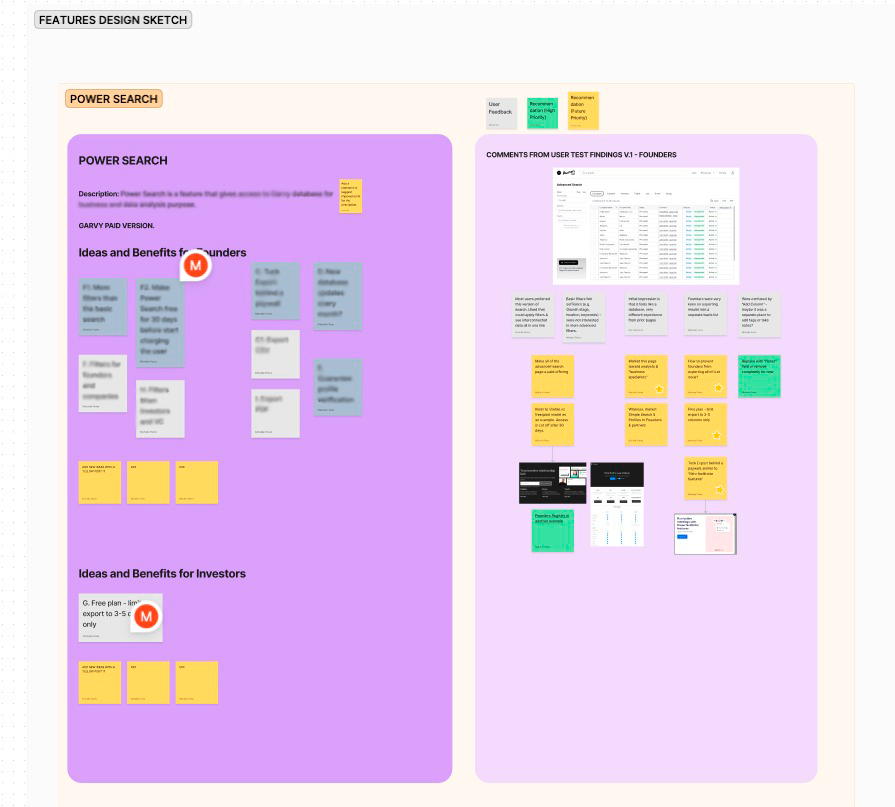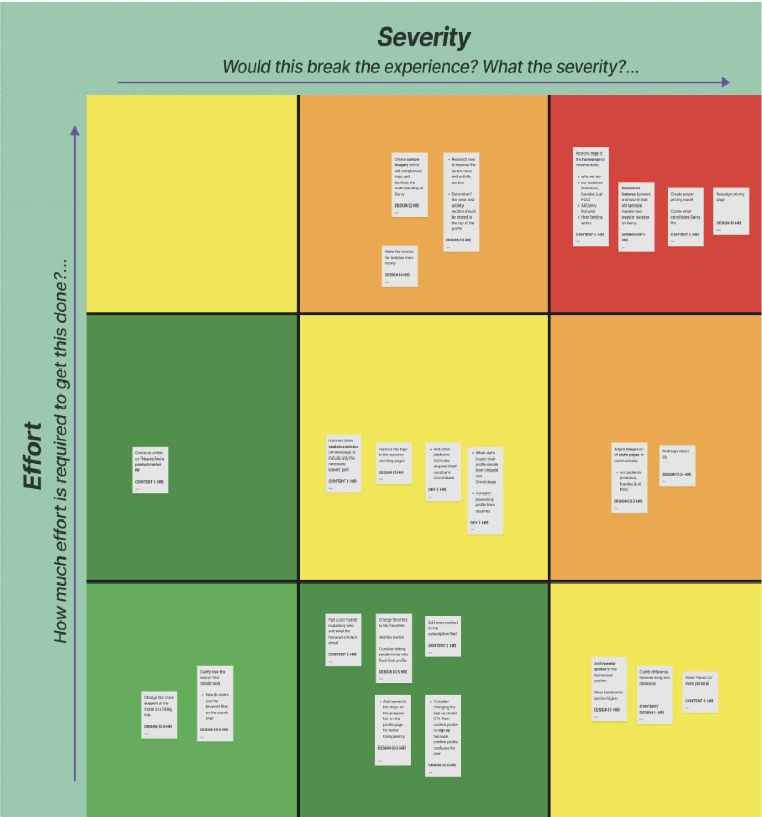I worked as a Product Leader, developing solutions to increase opportunities for the BIPOC community by helping pre-seed stage founders find the right connections and financial capital. My main goal was to create a venture that would help connect BIPOC founders and potencial investors. The platform wasn't launch due to lack of investment.
My Role
As a Product Lead, I was responsible for making the idea into a reality. I was in charge of creating a solid product team that would develop innovative and efficient solutions to meet customer and market needs. I conducted product discovery processes, user interviews, and market analysis to identify opportunities and challenges. To support that, I worked on a product roadmap, user story map and user journey, among others frameworks.
Unfortunately, I'm not allow to provide more details about the platform. However, I'd be happy to share that I played a crucial role in bringing together a talented team and creating a prototype for an incredibly valuable product.
The Team
When I joined AWSM, we were a small team of around 5 people. To create a beautiful and innovative product, we realized the need to expand our team. I took on the responsibility of hiring for the development team and assisted in hiring product designers and copywriters. In the end, we grew to a team of approximately 15 people. The product team consisted of myself as the Product Manager, 02 Product Designers, 01 Frontend and 01 Backend developer, and 01 Tech Lead.
Roles and responsibilities
Main Challenge
First we needed to find the market fit. To tackle this challenge, I started by conducting extensive market research to gain a deep understanding of the potential target audience and the dynamics of the market. This involved analyzing market trends, studying consumer behavior, and identifying key competitors in the industry.
After gathering valuable insights, I moved on to the next crucial step: defining user personas. By creating detailed profiles of different types of users, I was able to develop a clear understanding of their needs, preferences, and pain points. This helped me tailor the product to meet the specific requirements of each user segment, ensuring a more personalized and engaging user experience.
I also focused on mapping out the user journey. This involved visualizing the entire process users go through when interacting with the product, from initial awareness to eventual conversion. By understanding the different touchpoints along the user journey, I was able to optimize the idea and make it more user-friendly and intuitive.
User Journey
Once we had a clear understanding of what we needed to build and who our target audience was, we prioritized the functionalities based on our product strategy and vision. We wanted to identify the key business goals that would drive our development efforts. To effectively plan and track our progress, we created a User Story Map that outlined the themes or user steps, epics, and user stories aligned with our user needs. This map evolved and adapted throughout our discovery process and user testing.


Discovery and Testing
Every idea went through the discovery process. We sketched the idea and listed possible benefits that needed to be tested for each type of user. We separated everything between what could possibly be free or part of the paid version. If it was necessary to update the prototype to test the new idea, we did so by conducting user interviews and observing how our reference clients used the platform.



Development
After thoroughly testing our design prototype and conducting user feedback sessions, we confidently moved forward into the development phase. With a well-defined tech stack in place, we embarked on the exciting journey of coding and bringing our vision to life. Following the Scrum methodology, we embraced iterative development and regular sprints to ensure continuous progress. I needed to ensure the team delivered everything smoothly by addressing any blockers that arose.
Tech Stack
We released the first group of functionalities and a marketing website before the project stopped due to lack of investment.
